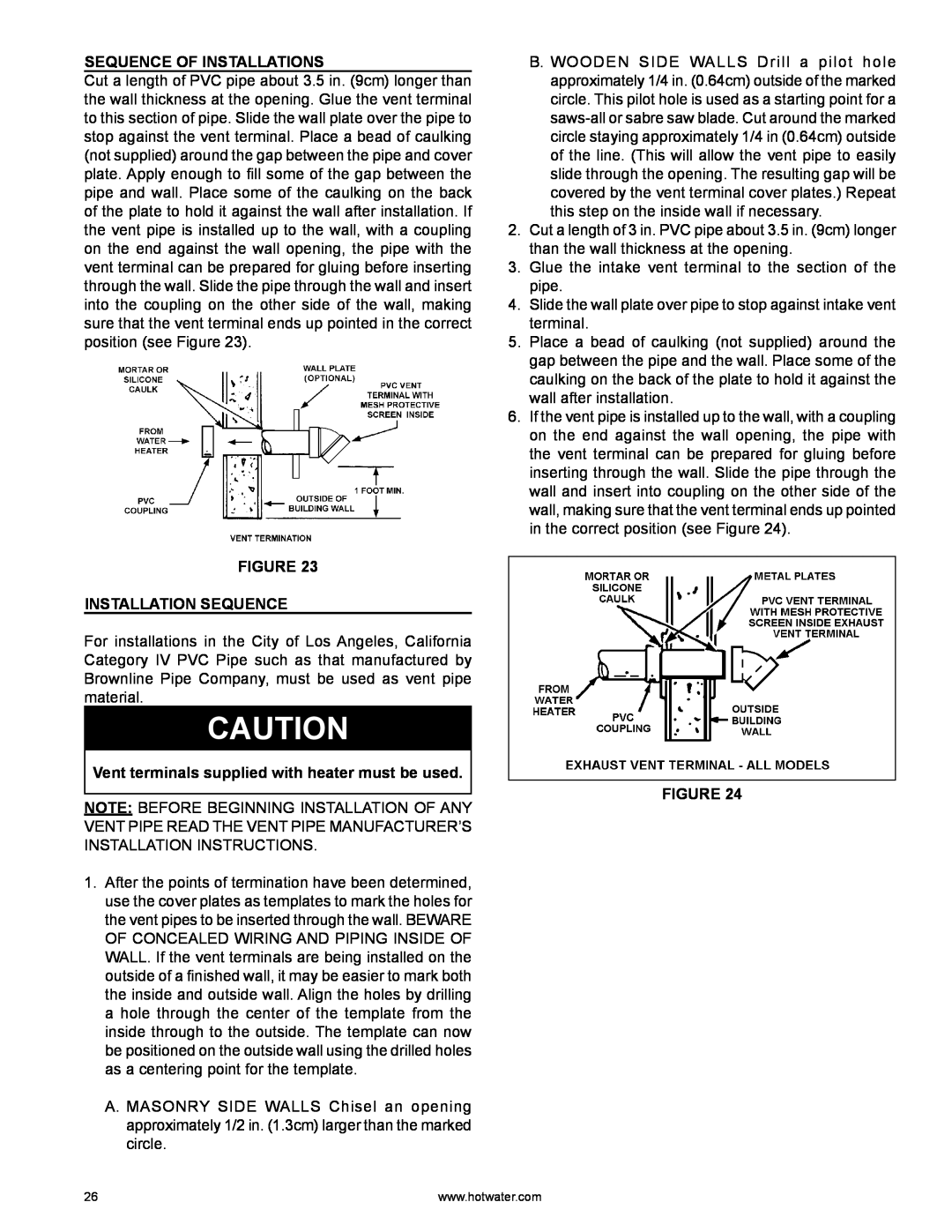
SEQUENCE OF INSTALLATIONS
Cut a length of PVC pipe about 3.5 in. (9cm) longer than the wall thickness at the opening. Glue the vent terminal to this section of pipe. Slide the wall plate over the pipe to stop against the vent terminal. Place a bead of caulking (not supplied) around the gap between the pipe and cover plate. Apply enough to fill some of the gap between the pipe and wall. Place some of the caulking on the back of the plate to hold it against the wall after installation. If the vent pipe is installed up to the wall, with a coupling on the end against the wall opening, the pipe with the vent terminal can be prepared for gluing before inserting through the wall. Slide the pipe through the wall and insert into the coupling on the other side of the wall, making sure that the vent terminal ends up pointed in the correct position (see Figure 23).
FIGURE 23
INSTALLATION SEQUENCE
For installations in the City of Los Angeles, California Category IV PVC Pipe such as that manufactured by Brownline Pipe Company, must be used as vent pipe material.
CAUTION
Vent terminals supplied with heater must be used.
NOTE: BEFORE BEGINNING INSTALLATION OF ANY VENT PIPE READ THE VENT PIPE MANUFACTURER’S INSTALLATION INSTRUCTIONS.
1.After the points of termination have been determined, use the cover plates as templates to mark the holes for the vent pipes to be inserted through the wall. BEWARE OF CONCEALED WIRING AND PIPING INSIDE OF WALL. If the vent terminals are being installed on the outside of a finished wall, it may be easier to mark both the inside and outside wall. Align the holes by drilling a hole through the center of the template from the inside through to the outside. The template can now be positioned on the outside wall using the drilled holes as a centering point for the template.
A.MASONRY SIDE WALLS Chisel an opening approximately 1/2 in. (1.3cm) larger than the marked circle.
B. WOODEN SIDE WALLS Drill a pilot hole approximately 1/4 in. (0.64cm) outside of the marked circle. This pilot hole is used as a starting point for a
2.Cut a length of 3 in. PVC pipe about 3.5 in. (9cm) longer than the wall thickness at the opening.
3.Glue the intake vent terminal to the section of the pipe.
4.Slide the wall plate over pipe to stop against intake vent terminal.
5.Place a bead of caulking (not supplied) around the gap between the pipe and the wall. Place some of the caulking on the back of the plate to hold it against the wall after installation.
6.If the vent pipe is installed up to the wall, with a coupling on the end against the wall opening, the pipe with the vent terminal can be prepared for gluing before inserting through the wall. Slide the pipe through the wall and insert into coupling on the other side of the wall, making sure that the vent terminal ends up pointed in the correct position (see Figure 24).
FIGURE 24
26 | www.hotwater.com |
